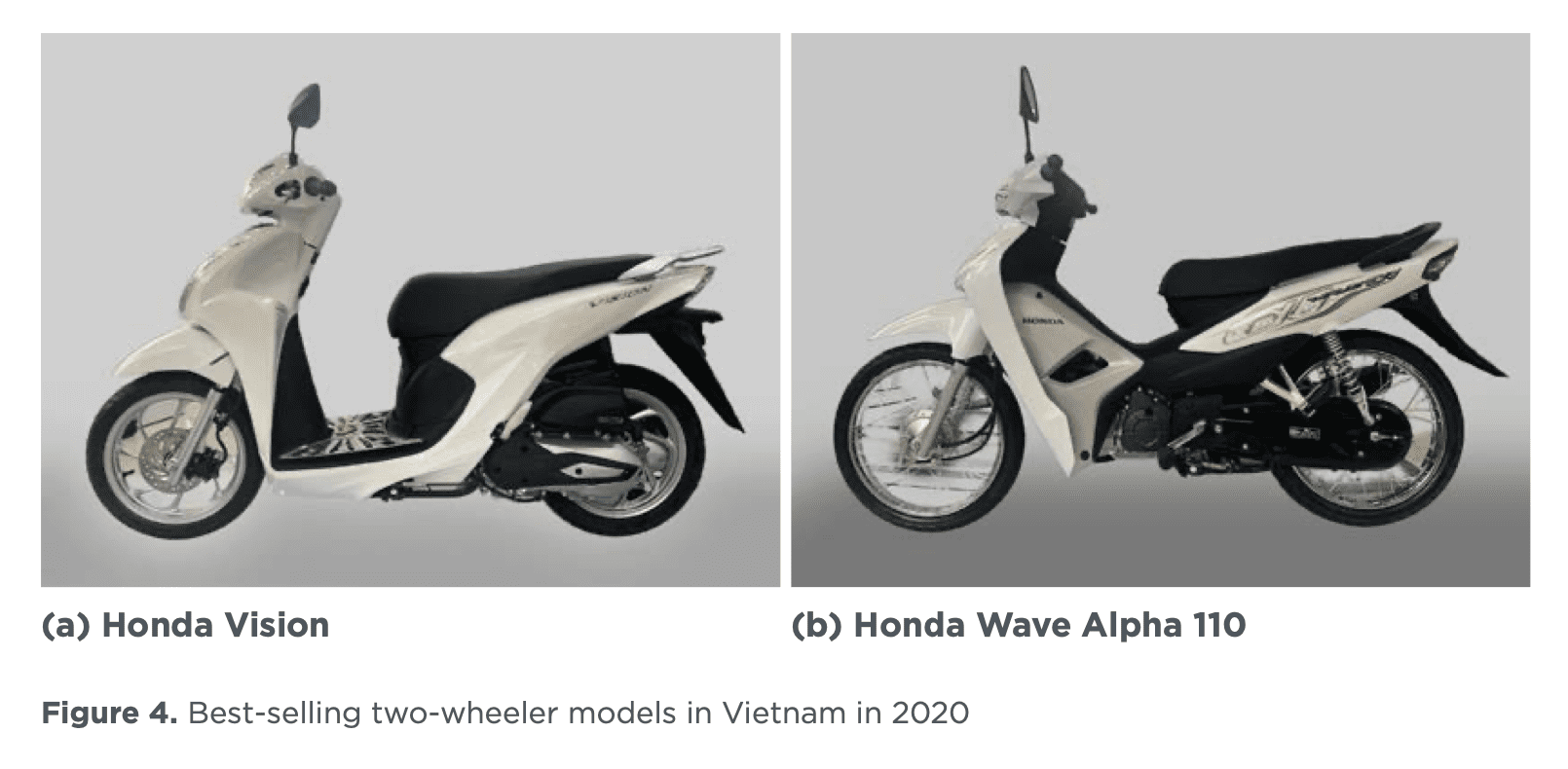Market analysis of the new two-wheeler fleet in India for fiscal year 2020–21
Working Paper
Two-wheelers in Vietnam: A baseline analysis of fleet characteristics and fuel consumption in 2019 and 2020
This paper aims to develop a baseline of fuel consumption of the two-wheeler fleet in Vietnam as a foundation for future policies designed to reduce emissions from two-wheelers and to set fuel economy standards. Policies to reduce emissions from two-wheelers could help Vietnam meet its climate and air pollution reduction goals. For the analysis, we developed a database of the two-wheeler fleet sold in 2019 and 2020. We then analyze vehicle characteristics and fuel consumption by two-wheeler type and by manufacturer. We also analyze the characteristics and key manufacturers of electric two-wheelers sold in 2020.
Key findings include these:
- The two-wheeler market in Vietnam is dominated by internal combustion engine vehicles, but sales of electric two-wheelers (E2Ws) jumped markedly from 2019 to 2020.
- Two-wheelers with internal combustion engines (ICEs) are predominantly fueled by gasoline. ICE motorcycles account for the majority of the fleet, at 94.8% in 2019 and 91% in 2020; ICE mopeds account for a much smaller market share, at only 0.3% in 2019 and 0.7% in 2020.
- The number of E2Ws increased significantly from 2019 to 2020, from 4.9% of the market in 2019 to 8.3% in 2020. The largest growth is found in the number of e-mopeds, which increased from 3.8% in 2019 to 7.1% in 2020. E-motorcycles account for a very small share of the two-wheeler fleet, at only 1.1% in 2019 and 1.2% in 2020. VinFast has the largest market share of E2Ws sold in 2020, at 47%.
- Two-wheeler sales in Vietnam are highly concentrated among several models and manufacturers. The top 10 best-selling two-wheeler models account for 76.5% of the market. The two biggest-selling manufacturers are Honda and Yamaha; 89.3% of two-wheelers sold in 2020 are from these two manufacturers. Therefore, any efficiency technology improvements in popular two-wheeler models or technology innovation from major manufacturers, especially these two, would reduce fleet average fuel consumption considerably.
- Motorcycles with engine displacement between 50 cc to 125 cc are dominant in the new two-wheeler fleet sold in 2020, accounting for 80.7%. Only 2.3% of the fleet has engine displacement greater than 150 cc.
- The potential for fuel consumption reduction of two-wheelers in Vietnam is great, through both ICE technologies and electrification.
- The average fuel consumption in 2020 fell by 4.3% compared to 2019 (from 1.84 l/100 km in 2019 to 1.76 l/100 km in 2020) mainly because of the increasing penetration of E2Ws in 2020.
- Motorcycles with automatic transmission technology have the highest fuel consumption among two-wheeler types, and it is higher than the average fuel consumption of the total fleet. Mopeds have the lowest fuel consumption with low vehicle weight and engine power, which is much lower than the fleet’s average fuel consumption.
- A wide range of fuel consumption levels is observed for two-wheeler models with similar weight and engine power, which indicates the potential for technology improvements in less-efficient models. Fuel supply technology affects fuel consumption of motorcycles significantly; motorcycles using fuel injection technology have on average 12% lower fuel consumption than motorcycles using carburetor technology. Shifting from carburetor to fuel injection would not only reduce fuel consumption but also significantly reduce CO, HC, and NOx emissions.
- Eleven out of twelve manufacturers in this study produce only ICE two-wheelers or only electric two-wheelers. SYM fleet has the lowest fuel consumption with 1.67 l/100 km because 57.5% of two-wheelers sold by SYM are mopeds. Introducing electric two-wheelers to the market will allow manufacturers that provide only ICE two-wheelers to significantly reduce the average fuel consumption of their fleets.

